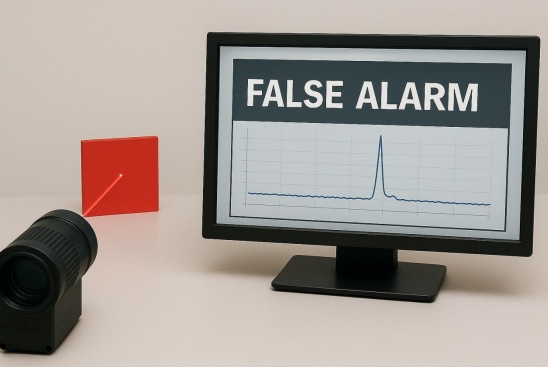
Call Me
+86-29-8450-3191
Email
sunny@eyoungtec.com
Laser rangefinder modules are essential for precise distance measurement in various applications, from robotics to surveying. Yet anyone who’s worked closely with these modules knows that “false alarms”—spurious distance readings when no target is present—can be maddening. This guide will help you diagnose and resolve common causes of false alarms in laser rangefinder modules.

Symptom: Electrical noise interference in laser rangefinders typically manifests as erratic measurements, signal instability, or false readings due to unwanted electromagnetic disturbances. This noise often originates from power supply fluctuations, electromagnetic interference (EMI) from nearby high-power devices, or poor grounding in the circuit. High-frequency switching components (such as DC-DC converters or motor drivers) can introduce ripple noise into the measurement system, while improper shielding or cable routing may allow external EMI to couple into sensitive signal lines.
Solution: Once the flase alarm is judged to be electrical noise interference, it is recommended to connect a larger common mode filter in series, replace the grounding capacitor with 10nF and increase the threshold (will reduce the capacity)
Symptom: Communication noise interference occurs when external electromagnetic disturbances disrupt the data transmission between the laser rangefinder module and the host system (e.g., microcontroller, PC, or display unit). This can lead to corrupted data packets, signal dropouts, or incorrect distance readings. Common sources of interference include:
Electromagnetic Interference (EMI) from nearby motors, inverters, or high-frequency circuits.
Ground loops caused by improper grounding between devices.
Crosstalk in parallel communication lines (e.g., UART, I2C, or SPI).
Long or unshielded cables acting as antennas for noise pickup.
Solutions: It is recommended to wrap a shielding magnetic ring or increase the threshold (will reduce the ability) to deal with communication noise.

Symptom: Optical noise interference refers to unwanted light signals that disrupt the laser rangefinder's detection capability, potentially causing measurement errors or false readings. This type of interference is particularly problematic in environments with strong ambient light or reflective surfaces.
Diagnosis: Block the receiving lens of the rangefinder or point it to the sky (avoid straightly to the sun) to test whether there are still false alarms. If there are no false alarms, the cause is determined to be optical noise interference; check whether it is caused by external light or the optical window of the whole machine (eg. the band is inconsistent with the rangefinder, the optical window is tilted too much, the optical window diameter is small and blocks light, and the optical window is too dirty).
Mechanical shielding: Add a hood or shroud around the transmitter and receiver windows. Use “black” non-reflective coatings to prevent reflections.
Optical filtering: Install narrow-band interference filters tuned to the laser’s wavelength.
Firmware thresholds: Raise the detection threshold in low-confidence scenarios. Implement dynamic threshold adaptation based on measured ambient light.
False alarms in laser rangefinders can stem from environmental, hardware, or software issues. By systematically checking each potential cause, you can restore accurate performance. Regular maintenance and proper calibration are key to preventing future issues.